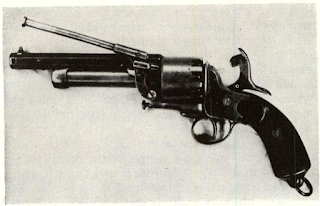Richmond authorities for payment of his revolver accounts.
In September, , reference to money for LeMat
The establishment of credit here would save the Government from great embarrassment and the enormous loss on
In what manner Huse failed to cooperate with LeMat
The contract which LeMat had with the C.S. Navy,
Bulloch proposed to C. Girard & Company that they
Bulloch ordered his inspecting officer, Lieutenant
These mechanical defects were serious to Bulloch,
Meanwhile, Bulloch took a walk over to the London
Direct reference is made to a Navy contract “with
be shipped in lots of 250 or 500, each gun accompanied by ten cartridges and ten percussion caps. This
The terms of the contract including requirement for
In September, , reference to money for LeMat
The establishment of credit here would save the Government from great embarrassment and the enormous loss on
In what manner Huse failed to cooperate with LeMat
The contract which LeMat had with the C.S. Navy,
Bulloch proposed to C. Girard & Company that they
Bulloch ordered his inspecting officer, Lieutenant
These mechanical defects were serious to Bulloch,
Meanwhile, Bulloch took a walk over to the London
Direct reference is made to a Navy contract “with
be shipped in lots of 250 or 500, each gun accompanied by ten cartridges and ten percussion caps. This
The terms of the contract including requirement for


Comments
Post a Comment